The Lowe’s MVPs Pro Rewards and Partnership Program is a new approach that flips traditional loyalty programs on their heads to deliver real solutions and benefits Pros need to succeed. The new program comes at a time when 90% of Pros say it’s important that retailers have valuable loyalty programs, and according to new findings from Lowe’s, Pros also voiced Read more
ShopTalk
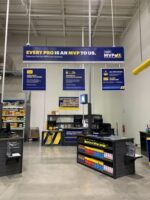
The Lowe’s MVPs Pro Rewards and Partnership Program is a new approach that flips traditional loyalty programs on their heads to deliver real solutions and benefits Pros need to succeed. The new program comes at a time when 90% of Pros say it’s important that retailers have valuable loyalty programs, and according to new findings from Lowe’s, Pros also voiced the need for retailers to bring more than rewards to the table.

Lowe’s MVPs Pro Rewards, available in select regions and nationwide gives Pros a committed business partner in Lowe’s. Complementing Lowe’s strong credit offerings (5% off every day on eligible purchases, to 0% interest for 60 days for Lowe’s Business Advantage accounts), Lowe’s MVPs Pro Rewards offers new and existing loyalty members benefits including:
- Lowe’s e-gift cards earned when Pros spend in-store and online on eligible purchases**
- Access to business resources helping Pros tackle back-of-house operations
- Exclusive offers for rewards on eligible paint purchases** and free select snacks or drinks** at Lowe’s stores
- A chance to win incredible prizes like Ford F-Series trucks that serve as many Pros’ mobile offices and custom-built local advertising packages***
- A simple mobile and online user experience allowing Pros to track and claim rewards even when sending a crew member into the store
- And, coming soon, MVPs Bonus Points that can be used for additional exciting rewards helping Pros invest in their businesses and themselves
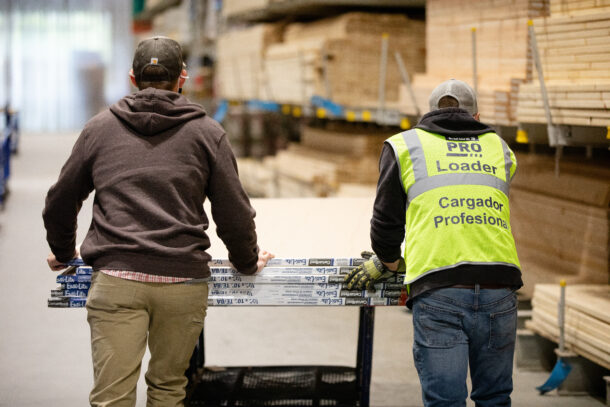
“We’re deepening our partnership with Pro customers because when they succeed, we succeed,” said Tony Hurst, Senior Vice President Pro, Services and International. “Lowe’s MVPs Pro Rewards is another big step in Lowe’s continued Total Home strategy when it comes to the important Pro customer. We are committed to a true business partnership mindset to help Pros as they grow their businesses and their futures.”
Nearly 90% of Pros say it’s important for retailers to have valuable loyalty programs as Pros also voiced the need for retailers to offer solutions to propel their business forward, according to Lowe’s first annual Lowe’s State of the Pro report, found online at Lowes.com/StateOfThePro. An industry-leading study, the report contains insights from Pros and their customers, detailing the state of the home industry and trends in homeowner improvement plans, and priority projects in 2022.
For more information on the latest for Pros, please visit Lowes.com/Pro.

As the effects of climate change become more apparent, humanity faces growing pressure to use more renewable and eco-friendly energy sources. The electric vehicle is one step in the right direction, as millions of people worldwide now own an EV. This new technology is also making its way into our business operations in the form Read more
As the effects of climate change become more apparent, humanity faces growing pressure to use more renewable and eco-friendly energy sources. The electric vehicle is one step in the right direction, as millions of people worldwide now own an EV. This new technology is also making its way into our business operations in the form of electric service vans.
Could electric vans be the service machines of the future? What obstacles might arise from implementing them into the workforce? Here’s everything you need to know about the future of electric service vehicles.

The Growth of Electric Service Vehicles
EV development has taken some big steps in recent years. A group of major companies – including Amazon and AT&T – established the Corporate Electric Vehicle Alliance (CEVA) in 2020, which marked a significant step in moving the economy towards renewable energy sources.
The alliance sent a clear message that electric vehicles are here to stay. It increased the demand for EVs and put greater pressure on auto manufacturers to ramp up production. Many big-name brands have released numerous electric models to meet the growing demand. We have also seen startup EV companies like Rivian gain relevance.
Contractors, engineers, maintenance professionals, and other occupations that rely on gas-powered vehicles should prepare to make the switch. If the CEVA alliance and increased EV production weren’t enough incentive, customers might also expect you to switch. They’re more environmentally aware than ever and have higher buying standards. EVs would help you build a positive brand image for this new wave of consumers.
Though it may seem intimidating now, transitioning to electric could bring your vehicle-reliant organizations to new heights. Businesses constantly look for new methods to make their operations more efficient, and electric vehicles improve efficiency in several ways:
- Charging costs less than refueling.
- Electric motor maintenance is less expensive and time-consuming.
- EVs are lighter than traditional vans and have better acceleration.
- They do not emit pollutants.
These benefits make switching to electric service vehicles seem like a no-brainer, but things aren’t as black and white as they appear. We have to overcome some serious obstacles to successfully bring fleets of EVs onto the roads.
Roadblocks Lie Ahead
While EVs have undeniable advantages over gas-powered vehicles, our infrastructure does not have the space or stability to handle widespread EV implementation. These are the primary issues with our current situation:
- Charging Stations: We would have to build thousands of charging stations to keep up with an influx of EVs, but the cost of installation and maintenance is a significant investment. Additionally, there are few logical locations for these stations that allow drivers to charge their vehicles without disturbing their schedules or privacy.
- Power Grid Workload: Our current power grid cannot sustain increased EV adoption in the long term. We would have to invest in a larger grid infrastructure or risk overloads and power outages.
- Grid Emissions: Although EVs themselves don’t cause pollution, grey electricity grids rely on fossil fuels. The more we use EVs, the more emissions we indirectly cause. We must find a way to decarbonize the grids.
With these issues in mind, skeptics wonder if the transition to electric is even worth the hassle. However, advances in Internet of Things (IoT) technology and artificial intelligence (AI) could introduce smarter methods of charging, grid load management, and battery maintenance in due time.
The success of electric vehicles depends on continuous progress in AI and IoT. Our infrastructure alone cannot withstand a massive influx of electric vehicles. Implementation remains a slow work in progress for now. Although millions of EVs have made it onto the road, companies are still holding off on rolling out EV fleets.
Progress Is Slow, but Remain Vigilant
Electric vehicles could play a major role in a greener future, but they also threaten our infrastructure’s stability. Even with these looming obstacles, corporations seem intent on making the switch. You should stay alert for sudden advancements, no matter how slow things appear right now.
Prepare yourself by researching the various electric service vehicle models and outlining how you would integrate them into your business operations.
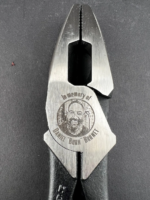
Mirabel, Canada lost one a cherished community member this past month, Daniel “Burn” Brunet. Brunet was known as an avid Klein Tools fan, and the company was shocked to hear of his unfortunate passing. Since its creation, Brunet ran the Klein Tools Fan Facebook page, Klein Tools Collectors. This page was created to give fans Read more
Mirabel, Canada lost one a cherished community member this past month, Daniel “Burn” Brunet. Brunet was known as an avid Klein Tools fan, and the company was shocked to hear of his unfortunate passing. Since its creation, Brunet ran the Klein Tools Fan Facebook page, Klein Tools Collectors. This page was created to give fans a space to talk about new products, clever hacks and more.

It was not a question to the 165-year-old family-owned company out of Chicago suburb Lincolnshire, Klein Tools wanted to create something that will help Burn’s memory live throughout the brand and provide support for his family. The idea of the honorary Daniel Brunet pliers was turned around and raffled off to fans within a week. These pliers raised over $10,000 for the Brunet family.
“Our fans go above any beyond consistently for us, and Burn was often at the forefront. It was only right to do something to recognize how important he was to the Klein Tools family,” said Greg Palese, Vice President of Marketing at Klein Tools.
To purchase the honorary Daniel “Burn” Brunet pliers, please visit here.
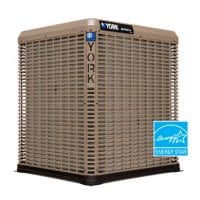
As professionals within the space, it’s our responsibility to inform and educate residential property owners in choosing an energy-efficient HVAC for their homes. By providing additional knowledge and assistance, professional mechanics can also separate themselves within the space. Whether you are an aspiring mechanic or an experienced professional in the field, quality customer service and Read more
As professionals within the space, it’s our responsibility to inform and educate residential property owners in choosing an energy-efficient HVAC for their homes. By providing additional knowledge and assistance, professional mechanics can also separate themselves within the space.
Whether you are an aspiring mechanic or an experienced professional in the field, quality customer service and educating consumers can provide a variety of benefits. To help homeowners understand which HVAC is best for their homes, share insight into which energy-efficient system would be a good fit. Not only are you educating these customers, but by developing positive relationships, you can earn strong word-of-mouth connections.
Use this information to assist homeowners when trying to find the most energy efficient HVAC systems for their home.

What is an Energy-Efficient HVAC System?
Naturally, HVAC systems come in a variety of different sizes, types, commercial and residential alike. As technology advances, new systems start to separate themselves from their traditional counterparts. In the mechanic community, we are constantly battling how to navigate these changes while still helping consumers save energy and money in their residential properties.
According to energy.gov, heating and cooling accounts for about half of a typical home’s energy usage. Thus, high performance HVAC systems are essential in managing energy consumption and associated costs for individual homeowners. Although some might not seem as powerful, they can ensure a sufficient job with energy usage in mind. When explaining HVACs to consumers, be sure to clearly define and differentiate what an energy efficient HVAC is and how these systems would work in their homes.
How to Differentiate Between Energy Efficiency Measurements?
Based on their functionality, there are distinct measurements of efficiency performance based on different HVAC systems. Primarily, reviewing the efficiency measurements are what makes the difference between these units. Their purpose varies and so do their energy consumption measurements. One of the most common of these statistics include, AFUE (Annual Fuel Utilization Efficiency), HSPF (total heat output), and SEER (Seasonal Energy Efficiency Ratio).
When investing in the right system, it’s critical to identify these high efficiency measurements. For example, when buying a new appliance or system, checking for energy data along with what makes a product ENERGY STAR certified will help define the energy saving capabilities of that machine. The ENERGY STAR certification plays a major role in determining the power saving opportunities of a given system. Carefully choose the devices with the highest percentage of either AFUE, HSPF, and SEER.
How to Help Them Decide Which System is Best for their Property?
In order to help a homeowner decide which systems are best for their property, they need to understand their options. They also should consider their home’s age, layout, geo-location, weather, and temperature patterns. These elements will directly impact which machines will be the best fit to make their home as comfortable as possible.
The most common and effective devices for heating a residential property are furnaces with high percentages of AFUE and energy efficient heat pumps. For summertime, the most ideal cooling system combination would be either using a heat pump or air conditioners. Take into consideration the amount of heat a home is exposed to along with the amount of cold a property can experience on a yearly basis.
 Ideal Types of Efficient HVAC Systems
Ideal Types of Efficient HVAC Systems
Furnace
For a furnace in particular, the efficiency measurements are in terms of AFUE (Annual Fuel Utilization Efficiency). We will want to install a furnace for homeowners with high measurements of AFUE. For example, if they purchase a furnace with an AFUE of 90% meaning that 90% of the energy you are investing in is being used to heat your property. This has become the most preferred method of heating a residential property, these devices can run on gas, oil, electricity, and they can vary in energy efficiency.
Geothermal Heat Pump & Air-Source Heat Pump
Other efficient systems to install include a geothermal heat pump and an air-source heat pump. Both provide an improved energy saving method of heating and cooling necessary for a home. In heating mode, the energy will be measured by HSPF, which means the (total heat output). Because it both warms and cools, in cooling mode, you will want to be mindful of the SEER (Seasonal Energy Efficiency Ratio) rating — the higher the better but ideally over at least 20.
A geothermal heat pump is a stable but expensive way to heat and cool your property, the system itself uses the earth as a source of heat. On the other hand, an air-source heat pump ventilates air in and out of your home. When in heating mode, this specific system uses refrigerant cool air and moves heat in from the outside, which is not exactly ideal for colder climates.
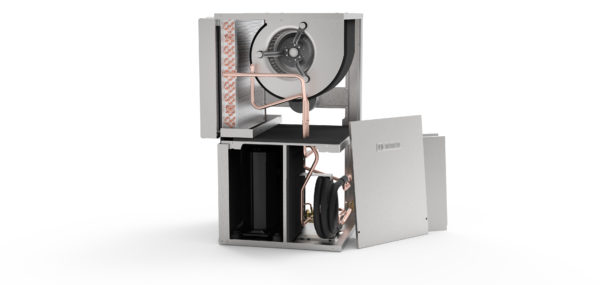
Air Conditioners
In comparison to the other home comfort systems, as you know, an air conditioner plays a significant role in cooling a home in hot temperatures. In warmer climates, this is an essential unit to install when reviewing a residential property’s interior comfortability. Typically, air conditioners are matched with a corresponding furnace to heat a home in the colder months. These appliances use SEER to measure energy competency, so as you search, consider investing in a higher SEER rating.
How to Ensure HVAC System Longevity?
After homeowners decide which machines are best for their property, remind them the importance of your services, the installation process, and preventative protection along with any maintenance tips. When installing these systems, be transparent with the residents; your knowledge will help them get a better understanding of how to treat these devices. Doing so will also establish a sense of security and trust with your consumers.
Some maintenance tips that you should share with your customer include, how to clean system filters, clean around the machine itself, prevent obstruction, and inspect their air ducts. The health hazards of dirty furnace filters is something that every homeowner should be able to avoid if they are instructed on how to do so. Seasonally, every homeowner should also revisit their HVAC appliances to check for cleanliness, effectiveness, and/or proof of proper installation.
In order to ensure longevity and effectiveness, remind them of their protection options as well. One option could be getting warranties on each appliance individually, which could get expensive, or investing in a single home warranty policy. Both options can provide an umbrella of protection against natural wear and tear for every system, while making it easier to access job opportunities. Sharing additional options with your consumers not only educates them, but shows that you are committed to protecting their investment as well.
Final Thoughts to Consider
Each year in the U.S., three million heating and cooling systems are replaced and large amounts of money are used for repairs. We can continue to try to find new ways to make saving energy easier than ever before.
Visit your partners at Mechanical Hub for products, news, industry insight, and featured articles to learn more about what is happening in the industry right now.
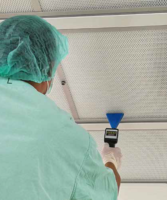
A building’s design, construction, setup, and operations are all based upon the initial intended use of the facility and current building codes. The building’s ventilation system is designed to achieve acceptable IAQ levels based upon “normal” operating conditions. However, no matter the design, the ventilation system’s initial setup and operation have limitations. Heating Ventilation and Read more
A building’s design, construction, setup, and operations are all based upon the initial intended use of the facility and current building codes. The building’s ventilation system is designed to achieve acceptable IAQ levels based upon “normal” operating conditions. However, no matter the design, the ventilation system’s initial setup and operation have limitations. Heating Ventilation and Air Conditioning (HVAC) systems are complex mechanical systems subject to degradation over time. Buildings are dynamic spaces. Occupancy, building use, operational expectations, and building codes change and evolve. Recent world events related to the pandemic and climate change are dramatically redefining “normal” operating conditions.
 The volume of outdoor air introduced into a building is essential to achieving acceptable indoor air quality through diluting airborne pollutants (including aerosolized viruses like SARS-CoV-2), maintaining adequate building pressures, and controlling temperature and humidity levels.
The volume of outdoor air introduced into a building is essential to achieving acceptable indoor air quality through diluting airborne pollutants (including aerosolized viruses like SARS-CoV-2), maintaining adequate building pressures, and controlling temperature and humidity levels.
The continuous and accurate measurement of air volume matters. When a ventilation system fails to provide proper ventilation, the effects are not immediately known. Unless the outdoor airflow rate is actively measured, determining under-ventilation or over-ventilation may only come after a preventable outcome.
- Under-ventilation can negatively impact occupant comfort, health, and safety. Headaches, fatigue, upper respiratory irritations are examples of delayed indications of under-ventilation. When a large population of occupants experiences these conditions, it is historically referred to as Sick Building Syndrome. The potential for transmission of aerosolized viruses, like SARS-CoV-2, raises the importance of measuring air volumes and having real-time data to verify environmental conditions and indoor air quality.
- Over-ventilation can negatively impact building operations and operational expenses. Each cubic foot per meter (CFM) of outdoor air introduced into a building must be treated (cooling, heating, filtering) to achieve the desired environmental conditions inside a building. Increasing the volume of outdoor air increases the workload and operational stresses on the HVAC system. Increases in capacity and equipment runtimes directly increase the consumption of energy and associated energy costs.
The volume of ions in indoor air matters because ions contribute to cleaning air. Some of the cleanest outdoor air is near cascading water, such as the shorelines of rivers, oceans, and waterfalls. The energy generated from the crashing waves and plunging water fills the air with ions. These ions act as naturally scrubbing agents and clean the nearby air.
When measured, ion levels in these locations typically range from 1,000 to 3,000 ions per cubic centimeter (ions/cc). EPA studies of human exposure to air pollutants indicate that indoor pollutant levels can be 2 to 5 times higher than outdoor levels. And, when measured, the volume of ions in indoor air typically only averages in the hundreds of ions/cc.
HVAC systems that incorporate advanced indoor air quality technologies that focus on measuring and cleaning indoor air offer the greatest benefit to building occupants and greatest ROI for building owners.
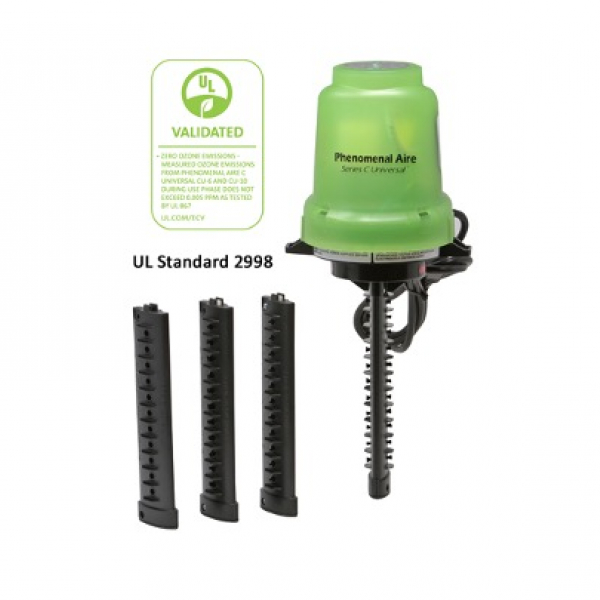
Phenomenal Aire™ advanced IAQ technology utilizes needlepoint bipolar ionization technology to generate ions and clean indoor air. Phenomenal Aire’s superior design maximizes ion production. Higher volumes of ions released into an HVAC airstream increases agglomeration activity and the efficacy of the air cleaning process. Higher production volumes also offer a greater number of ions to travel from the HVAC system into the occupied space, where they contribute to raising indoor air ion levels closer to those found in clean outdoor air settings.
Third party studies have shown that ions generated by needlepoint bipolar ionization can have an anti-microbial effect on certain viruses, like SARS-CoV-2, which ultimately leaves the virus inactive.
For more information on Phenomenal Aire, visit www.phenomenalaire.com.

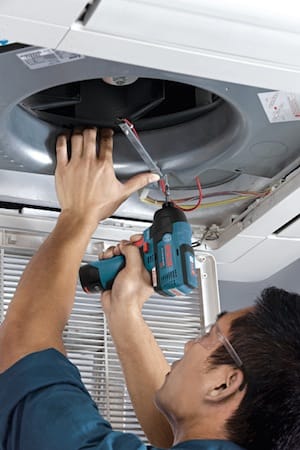 Ideal Types of Efficient HVAC Systems
Ideal Types of Efficient HVAC Systems